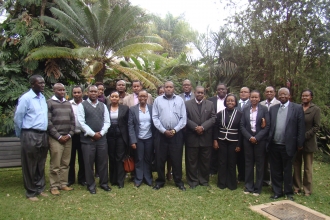Essays on Behavioral Economics and Policies for Provision of Ecosystem Services
This is a PhD dissertation by Anna Norden contains five papers:
This is a PhD dissertation by Anna Norden contains five papers:
REDD (reduced emissions from deforestation and degradation) aims to slow carbon releases caused by forest disturbance by making payments conditional on forest quality over time. Like earlier policies to slow deforestation, REDD must change the behaviour of forest degrading actors.

EfD-Kenya held its first Annual Workshop on August 7, 2013 at Fairview Hotel in Nairobi. The workshop brought together researchers, policy makers, academia and other stakeholders in the environment…
This study was carried out to find out the impact of PES on the welfare of the communities in the Uluguru Mountains. The objective is to assess PES project which aims at conserving the environment (forest) and reducing poverty level.
The assessment of the project is done by looking at the difference between the treatment group (those who participate in PES) and control group (households who do not participate).
We offer a nationwide analysis of the initial years of Costa Rica’s PSA program, which pioneered environmental-services payments and inspired similar initiatives. Our estimates of this program’s impact on deforestation, between 1997 and 2000, range from zero to one-fifth of 1% per year (i.e., deforestation is avoided on, at most, 2 out of every 1,000 enrolled hectares). The main explanation for such a low impact is an already low national deforestation rate. We also consider the effect of enrollment.
This paper estimates the visitation demand function for Kgalagadi Transfrontier Park (KTP) in order to determine the conservation fee to charge South African residents to maximise park revenue.

This workshop was organized by the Environmental Economics Policy Forum for Ethiopia (EEPFE) in collaboration with Portland State University and the World Bank on the 10th of December 2012 at Desalegn…
This project is a UN-REDD Program in Panama and is funded by the UNEP (United Nations Environment Program). The objective of this project is to formulate future scenarios of deforestation and
In 2010, EfD-Kenya embarked on a pilot study analyzing the effects of forest devolution in Kenya with a specific focus on Kakamega forest. In particular the research focuses on the formation of